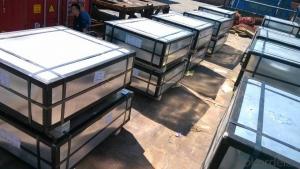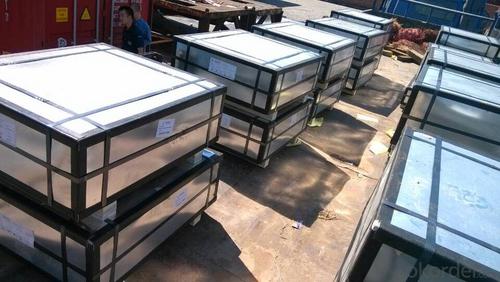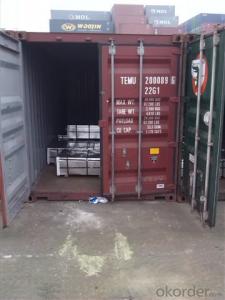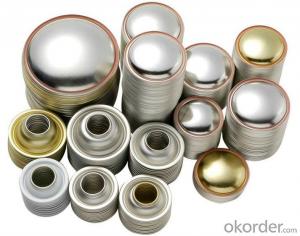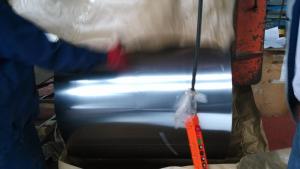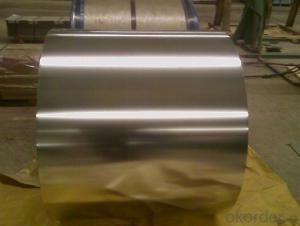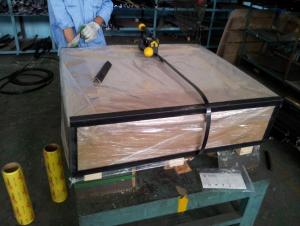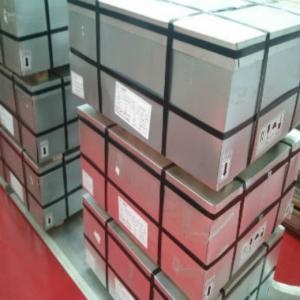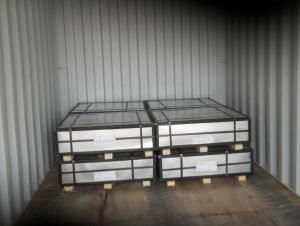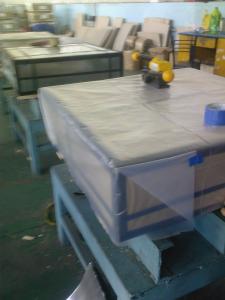Tinplate in SPCC/MR Grade for Industry Use
- Loading Port:
- China main port
- Payment Terms:
- TT OR LC
- Min Order Qty:
- 25 m.t.
- Supply Capability:
- 30000 m.t./month
OKorder Service Pledge
OKorder Financial Service
You Might Also Like
1. Products: Tinplate
Tinplate and TFS are widely used for making all types of containers such as artistic cans, tea cans, painting cans, chemical package cans and metal printing etc. Its applications are not limited to containers; recently, they have also been used for making electrical machinery parts and many other products.
2. Specification:
Our goods enjoyed high quality both at home and abroad. We can supply tin free steel as follows:
Technical standard | JISG3303 and GB/T 2520-2008 |
Steel Type | MR / SPCC |
Thickness | From 0.15mm to 0.50mm (Tolerance +/- 0.01mm) |
Width | Normally 600-1050mm (Tolerance +3/-0 mm) |
Coating | 2.8/2.8g/m2 , 2.8/5.6g/m2 ,1.1/1.1 g/m2 |
Temper & Annealing | T1-T5, DR7-8, TS230-TH435, T49-T65(+/- 4) |
Surface Treatment | Bright & Fine Stone & Stone & Silver & Matt |
Payment terms | Letter of Credit (L/C), Telegraphic transfer (T/T) |
Price terms | CFR & CIF price term |
Delivery time | Within 60 days after received L/C or T/T down payment |
Packing | High quality shipping packing which contains thin plastic film, rust-proof paper, metal cover, metal angles and strap sand pallet. |
Minimum order Quantity(MOQ) | 25 metric tons (1X 20'' container) |
3. Pictures:
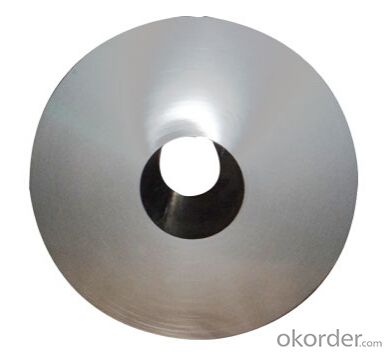
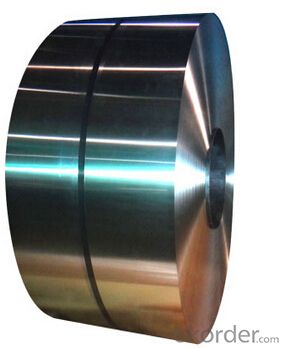
4. Features of the factory price/ tin free steel/tinplate/tfs/tmbp/etp/spte:
Beautiful Appearance
Excellent Paintability & Printability
Excellent Formability & Strength
Excellent Corrosion Resistance
Excellent Solderability & Weldability
5. FAQ:
We are one of the main producers in China for tinplate, tin free steel and also TMBP. At present, our productivity is more than 450000 MT/year.
For more information about our products or company, pls contact us freely.
Welcome your enquiries and orders.
- Q: What are the different types of tinplate edge finishes?
- There are primarily three types of tinplate edge finishes: open top, tight top, and double tight top.
- Q: What are the hygiene benefits of tinplate packaging?
- Tinplate packaging offers several hygiene benefits due to its properties. Firstly, tinplate is non-toxic and does not react with food or beverages, ensuring that the contents remain safe and unaffected. Secondly, the airtight and hermetic seal provided by tinplate packaging prevents the entry of bacteria, moisture, and other contaminants, thus preserving the quality and freshness of the product. Additionally, tinplate's resistance to corrosion and rusting minimizes the risk of contamination from external factors, enhancing the overall hygiene and safety of the packaged goods.
- Q: How is tinplate used in the food industry?
- Tinplate is extensively used in the food industry for packaging food products. It acts as a protective barrier between the food and the metal, preventing contamination and maintaining the food's quality and safety. Tinplate cans are commonly used for canned fruits, vegetables, meats, and other food items. Additionally, tinplate is also used for making food canisters, containers, and lids. Its corrosion resistance, durability, and ability to maintain food freshness make it an ideal material for food packaging in the industry.
- Q: What are the advantages of using tinplate for automotive components?
- There are several advantages of using tinplate for automotive components. Firstly, tinplate is highly corrosion resistant, which helps protect the components from rust and prolongs their lifespan. Additionally, tinplate provides excellent formability, allowing for complex shapes and designs to be easily manufactured. It also offers good strength and durability, ensuring the components can withstand harsh conditions and maintain their structural integrity. Furthermore, tinplate has good heat resistance properties, making it suitable for components that are exposed to high temperatures. Lastly, tinplate is a sustainable material as it is recyclable, contributing to environmental sustainability in the automotive industry.
- Q: What are the benefits of using tinplate for kitchenware?
- The benefits of using tinplate for kitchenware include its durability, resistance to corrosion, easy maintenance, and ability to preserve food quality. Tinplate is also lightweight, making it convenient for everyday use in the kitchen.
- Q: How does tinplate ensure the freshness of pet food?
- Tinplate ensures the freshness of pet food by providing a durable and airtight packaging solution. The tin coating on the steel sheet prevents any reaction between the metal and the pet food, keeping it safe from contamination. The hermetically sealed tinplate cans also protect the food from exposure to oxygen, light, and moisture, which can lead to spoilage. This ensures that the pet food remains fresh and maintains its quality for a longer shelf life.
- Q: How does tinplate packaging contribute to product protection against UV rays?
- Tinplate packaging provides an effective barrier against UV rays, as tin is highly opaque and reflective to ultraviolet light. This prevents the penetration of UV rays into the packaging and subsequently protects the product from UV-induced deterioration, such as discoloration, degradation, or spoilage.
- Q: How is tinplate used in the production of aerosol valves?
- Tinplate is used in the production of aerosol valves as it provides a protective and corrosion-resistant coating to the valve components. This prevents the valve from rusting or reacting with the contents of the aerosol, ensuring the reliable and safe functioning of the aerosol valve.
- Q: What are the advantages of using tinplate for stationery and office supplies?
- One advantage of using tinplate for stationery and office supplies is its durability. Tinplate is known for its strength and resistance to corrosion, making it a long-lasting material for items like pen holders, paper trays, or pencil cases. Additionally, tinplate is highly recyclable, making it an eco-friendly choice for sustainable office supplies. Its sleek and shiny appearance also adds a touch of elegance and professionalism to the products, making them visually appealing.
- Q: How is tinplate coated for beverage cans?
- Tinplate is coated for beverage cans through a process called electrolytic tinplating. In this process, a thin layer of tin is electroplated onto the surface of the steel sheet. The steel sheet is first cleaned and then passed through an electrolyte solution containing tin salts. An electric current is then applied, causing tin ions to be reduced and deposited onto the steel surface, forming a protective and corrosion-resistant tin coating. This tin coating ensures that the beverage cans remain safe and free from any metallic taste.
Send your message to us
Tinplate in SPCC/MR Grade for Industry Use
- Loading Port:
- China main port
- Payment Terms:
- TT OR LC
- Min Order Qty:
- 25 m.t.
- Supply Capability:
- 30000 m.t./month
OKorder Service Pledge
OKorder Financial Service
Similar products
Hot products
Hot Searches
Related keywords
